I’ve been thinking a lot about mice lately. And not just in the general vermin sense. Yes, it’s true that my girlfriend had one skitter across her foot on the stairs landing this week, which sent me to the garage to find traps and such. We’re now paying for an exterminator, mostly because it’s less hassle than trying to dig through the store room to find the tiny cracks and holes the shoulderless little rodents can squeeze through.
And we’re paying for therapy for my girlfriend, of course. When her eyes rolled back in her head at the sight of the terrified critter, and she howled a stream of profanities at me that would make Sam Kinison blush, I didn’t see an option (you know, because the presence of mice is clearly my fault).
But mostly, I’ve been thinking of mice as fish food.
It started last fall on a trip to Chile’s Rio Blanco, where big browns would chase skated mouse patterns across riffles and charge out from under submerged wood to hammer foam rodent imitations. And since then, I’ve had mouse dreams.
I’ve flirted with the notion of downsizing my favorite mouse pattern — a poor man’s Moorish Mouse that makes up for its simplicity by being easy to tie and nearly impossible to sink — for my local trout waters, and I’m convinced it’s a solid plan.
More Like This
These are the notions that ricochet through a fly fisher’s brain in the months between winter and summer (don’t call them “spring.” We don’t get “spring” here in the Rockies. We get winter, Easter Sunday, Memorial Day weekend and then, sometime in early June, it’ll snow in the morning and then the sun will come out and declare the start of summer). When an epic week spent casting mouse patterns to giant trout at a remote fly fishing camp in Middle of Nowhere, Patagonia, has time to marinate over the course of the long, dark months after the solstice, and eventually translates into thoughts like, “You know… I bet this will work on Smith Creek back home,” you know it’s been a long damn winter.
But … still…
I mean, why wouldn’t it, right? Why wouldn’t a downsized mouse pattern work on a lake-run cutthroat or a South Fork brown? Pressure? I guess that’s a reasonable assumption — fish that see the bottoms of drift boats all summer long are bound to be more cautious than fish that don’t. Coming to the top to chase a rare big bite of protein during the busy months on the Henry’s Fork or the Madison might seem antithetical, especially for highly educated trout.
But hey… fish gotta eat, right?
And on spring creeks the world over, night-time “mousing” is a time-honored endeavor. Seriously. We have mouse patterns because trout eat mice.
Years ago, before the Idaho Department of Fish and Game made it illegal to harvest native Yellowstone cutthroat trout on the South Fork of the Snake River, a buddy of mine showed up at work one morning and handed me a photo of three perfectly cleaned cutties stretched out on a plastic cutting board. Alongside the fish, he placed their stomach contents, which included three very small mice. It was proof positive that the small rodents are not only on the menu, but a significant portion of the native trout’s diet.
Last fall, after watching a two-foot-long brown erupt under a size 4 skated Moorish Mouse (sadly, I missed the fish — a common occurrence when trout target top-water flies on the move), I started plotting my plan of attack for stateside trout.

First, the downsize. Even in Patagonia where trout heads are roughly the size of a grown man’s fist, the size 4 flies were likely too big. Here in the Snake River drainage of eastern Idaho, where we certainly have our share of big trout — but also our share of mid-sized fish, too — I think the first move is to shrink the pattern to at least a size 6, and possibly to size 8.
Thinking back to that photo all those years ago, this makes sense, even for big-water cutthroats, browns and rainbows.
The next move is to figure out where a mouse pattern might work on any given stretch of water. I’m not naive — I get that, during the epic early-summer stonefly hatches or when the big Green Drakes come off the river after June downpour, a mouse pattern doesn’t make much sense. But, in the right stretch of water, under the right circumstances, a skated mouse could be a better option than trying to pluck 15-inch trout from a riffle with a size 16 PMD.
Experience matters, of course. My week on Rio Blanco leads me to believe that mouse flies skated across moving water — runs with some depth and obvious holding structure — can be absolutely deadly. While I did manage to pull some big fish out of slack water using mice, the vast majority of my mouse eats — and my mouse hookups — happened when the fly was presented with some sense of panic. Skating it and wiggling across open water proved best. As with any predator, trout don’t like it when potential meals get away, and making the fly “act” as though it was about to escape worked very well.
Finally, I think I should consider timing.
Usually, during a “normal” season, when runoff pushes through most of June, I’d fish the high water with big bugs that make a racket, or with big nymphs pushed tight to the banks where fish are holding and waiting.
In the coming months, as things finally warm up and runoff really gets going, I’m going to tie mouse patterns at the end of my tippet and see if I can’t convince otherwise tight-lipped, high-water trout to take a bite.
At this point, it’s purely an experiment. I’ll admit, during the cold, gray months of winter, I had visions of fishing nothing but mouse patterns all summer long, but now, as the days grow a little longer and I begin, in earnest, my emergence from hibernation, I realize that’s likely folly.
In time, I’m sure, the mouse dreams will dissipate with winter and warmer days. It’ll make more sense to float a high-and-dry attractor over my favorite cutthroat water, and less sense to tie up a dozen or so mouse patterns that might never see the water.
But, like I said… I’ve been thinking a lot about mice lately. And my plan, concocted in the fog of winter, still feels solid.
What do I have to lose? A few hundred casts here and there?




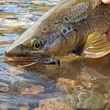






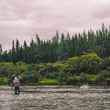




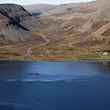




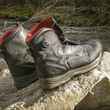
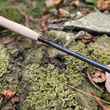



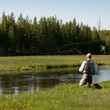
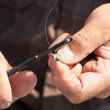

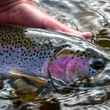

Comments
Jim Miller replied on Permalink
Haha,
They work on the fall in Patagonia also. Edwardo and I,with Ives on the oars took several good trout, including a rainbow, on mice and mice like patterns one evening a week ago on an unnamed lake as the sunset and darkness closed down so the only clue to strike was a 'sluuurrrrppp'.
Pages